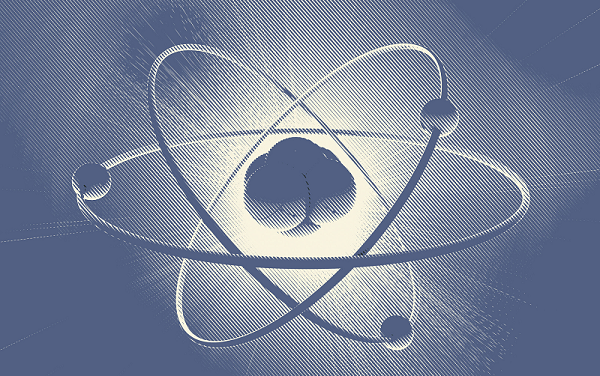
- Chemistry Notes for UPSC IAS Prelims (Part II)
- Chemistry - Home
- Chemistry - Introduction
- Chemistry - Branches
- Chemistry - Radioactivity
- Chemistry - Nuclear Energy
- Chemistry - Metals
- Chemistry - Metallurgy
- Chemistry - Sodium
- Chemistry - Calcium
- Chemistry - Aluminum
- Chemistry - Magnesium
- Chemistry - Maganese
- Chemistry - Iron
- Chemistry - Copper
- Chemistry - Silver
- Chemistry - Gold
- Chemistry - Platinum
- Chemistry - Zinc
- Chemistry - Mercury
- Chemistry - Plutonium
- Chemistry - Uranium
- Chemistry - Lead
- Chemistry - Thorium
- Chemistry - Hydrogen
- Chemistry - Helium
- Chemistry - Oxygen
- Chemistry - Carbon
- Chemistry - Nitrogen
- Chemistry - Chemical Law
- Chemistry - Discovery of Elements
- Elements With Their Valence
- Elements With Their Atomic Number
- Chemistry - Nobel Prize
Chemistry - Nuclear Energy
Introduction
Nuclear reactions release tremendous amount of energy (known as nuclear energy), which are being used to produce electricity in a nuclear power plant.

The nuclear energy normally produced by nuclear fission, nuclear fusion, and nuclear decay.
In 1938, German chemists Otto Hahn, Fritz Strassmann, and the Austrian physicist Lise Meitner conducted the experiments in which the products of neutron-bombarded uranium. As result of this experiment, the relatively tiny neutron split the nucleus of the massive uranium atoms into two roughly equal pieces and released massive energy.
The nuclear experiments of Otto Hahn and his colleagues are popular as nuclear fission.
Nuclear Fission
The process of nuclear fission produces free neutrons and gamma photons, while doing this also releases a very large amount of energy.
Nuclear fission is an exothermic reaction, which can release large amounts of energy in the forms of electromagnetic radiation as well as kinetic energy.
Nuclear fission, sometimes, can occur naturally (i.e. without neutron bombardment) as a type of radioactive decay.
Types of Nuclear Fission
Following are the major types of Nuclear Fission −
Chain Reaction and
Fission Reaction
Let’s discuss them in brief −
Chain Reaction
When one single nuclear reaction causes one or more subsequent nuclear reactions, it is known as chain reaction.
Such chain reaction increases the possibility of a self-propagating series of nuclear reactions.
The nuclear chain reactions release million times more energy per reaction than any other chemical reaction; therefore, it is also known as explosive or uncontrolled chain reaction.
When a heavy atom experiences nuclear fission, it normally breaks into two or more fission fragments. During the process, several free neutrons, gamma rays, and neutrinos are emitted, and ultimately a large amount of energy is released.
Following are the two examples of chain reaction −
235U + → neutron Fission fragments + 2.4 neutrons + 192.9 MeV
235Pu + → neutron Fission fragments + 2.9 neutrons + 198.9 MeV
In atom bomb, chain reaction technology is used, as it required consistent source of energy.
Fission Reactions
The fission reaction in which neutrons (produced by fission of fuel atoms) are used to induce yet more fission for the release of sustainable energy, is known as fission reactions.
Such reactions are slow and controllable; therefore, also known as controlled chain reaction.
The power (electricity) producing nuclear reactor is an ideal example of controlled chain reaction.
Based on the properties and type of usages, fission/controlled chain reaction is classified as −
Power reactors
Research reactors
Breeder reactors
These power reactors generally convert the kinetic energy of fission products into heat; further, the heat is used to heat a working fluid that drives a heat engine, which ultimately generates mechanical or electrical power.
Basic components of Nuclear Reactor
Following are the essential components of a nuclear reactor −
Nuclear fuels − Such as Uranium (233U, 235U), thorium (Th232), plutonium (Pu239).
Moderators − Used to control the emitted neutrons. E.g. heavy water, beryllium, graphite, etc.
Coolant − It is used to cool the reactor. E.g. water, steam, helium, CO2, air, molten metals, etc.
Control rods − It is used to run and stop the fission reaction. E.g. cadmium or boron rods are used for such purpose.
Nuclear Fusion
The process by which two light nuclei are fused to form a heavy nucleus is known as nuclear fusion; during this process, a tremendous amount of energy is being released known as nuclear energy.
The best example of nuclear fusion is – hydrogen bomb.
A hydrogen bomb is about 1,000 times more powerful than an atom bomb.